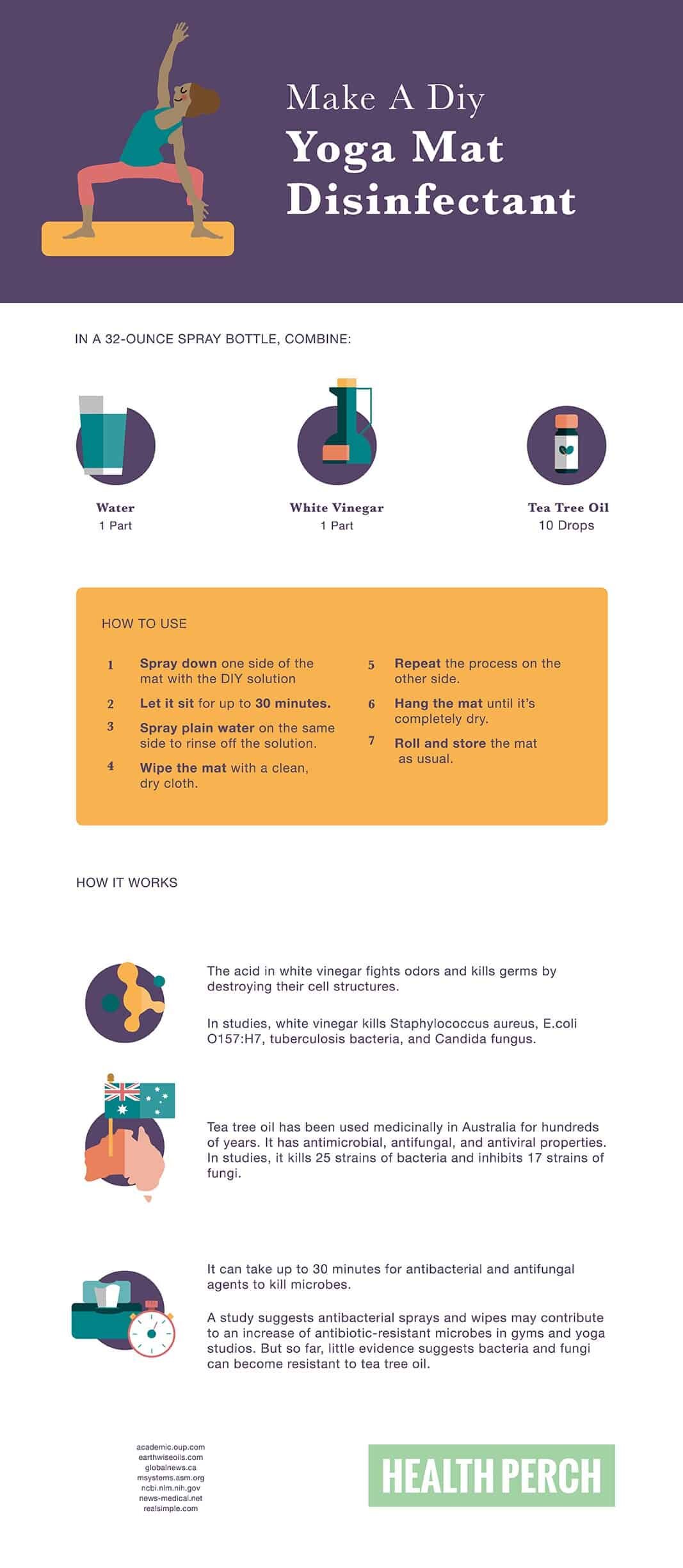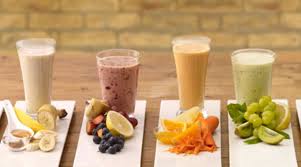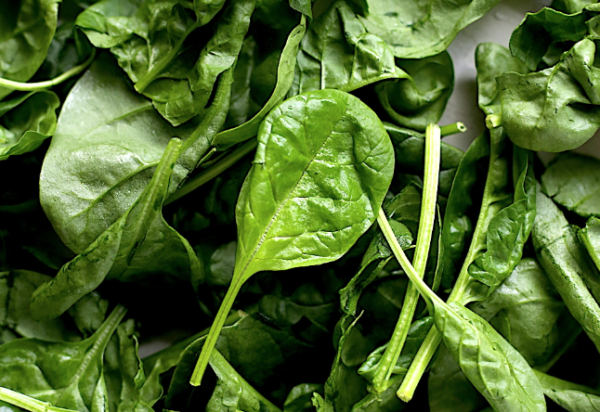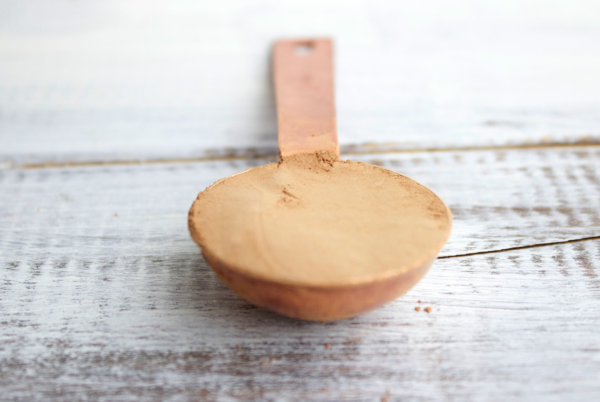Between minding your breath, balancing in tree pose, and avoiding a face plant during crow pose, a yoga practice gives you plenty to think about. So it’s easy to overlook the care and upkeep of your mat.
Still, reasons to keep your yoga mat clean abound (even if you aren’t a germaphobe). A clean mat is safer and healthier for anyone who uses it.
No matter whether you own a mat or share mats at a studio or gym, read on to learn why it’s important to clean a yoga mat, and discover tips and tricks to do it right. We’ll also cover some of the signs that indicate you should replace your mat.
Why It’s Important to Clean Yoga Mats
It’s not pleasant to think about, but your skin swarms with all sorts of creepy crawlies in the form of bacteria, fungi, viruses, and microscopic mites. These microorganisms move from your hands to your yoga mat during your practice. And the same thing goes for the oils, sweat, and tens of thousands of skin cells your body sheds every day.
That’s not all: If left unchecked, living organisms such as bacteria, fungi, and viruses multiply. And because these microorganisms thrive in humid environments, they’re likely to reproduce in a hot yoga studio or on a sweaty mat.
For the most part, even a large amount of bacteria, fungi, and viruses likely won’t cause harm. But for people with broken skin or compromised immune systems, exposure to microorganisms could result in a skin infection, athlete’s foot, plantar warts, or ringworm.
Now that you know how dirty human bodies can be, we probably don’t need to spell out why it’s important to clean a yoga mat. But here goes: Washing your mat on a regular basis helps limit the buildup of germs and other substances. And the same thing goes for cleaning a shared mat at a yoga studio or gym — only in this case, you’ll protect yourself from other people’s microorganisms and protect other people from yours.
How to Clean a Yoga Mat
Now that you know how dirty your yoga mat is, here’s how to clean it right.
1. Check the mat’s website for instructions.
Different mats are made up of different materials. Check the website for your brand of yoga mat to see if they have specific instructions regarding how to clean your mat. Follow the manufacturer’s tips if you find them.
2. Wipe down your mat after every practice.
After every class or practice session, wipe down your mat. An antibacterial hand wipe or antibacterial spray will work in a pinch. But in a recent study, researchers discovered that the widespread use of antibacterial sanitisers in gyms and yoga studios may be unintentionally contributing to an explosion of antibiotic-resistant bacteria. To stay safer over the long-term, you may be better off using a 50-50 vinegar and water spray and a clean towel instead of antibacterial options. (If this option isn’t available at your gym or studio, consider requesting it.) Make sure any cleaner you use is safe for porous surfaces and human skin. Let the mat completely dry before you roll it up.
3. Deep clean your mat regularly.
If you own a mat, it’s best to deep clean it occasionally. If you practice nearly every day, plan to wash your mat thoroughly at least once a month using one of these strategies.
-
Hose it down.
If the weather allows, head outside with a mild detergent, a sponge, and a hose. Spray down your mat, scrub it with detergent, rinse it thoroughly, and let it air dry out of direct sunlight. (Direct sun exposure can cause foam to break down.) Dry the mat completely before you roll it back up for storage.
-
Soak it.
If your home has a bathtub, you can deep clean your mat indoors. Fill the tub with lukewarm water, get the mat wet, and scrub it. If it’s been a long time since your last cleaning, let it soak for a while. Finally, rinse the mat and hang it until it’s completely dry.
-
Use a cleaning solution.
You can purchase a cleaning product that’s designed for deep cleaning yoga mats or make your own with vinegar, water, and tea tree oil. No matter which solution you use, liberally spray down one side of the mat with it, let it sit for a while, rinse the solution off, and dry it with a clean, dry cloth. Repeat the process on the other side and hang the mat to dry.
Signs It’s Time to Replace Your Old Yoga Mat
Even if you take great care of your yoga mat, it won’t last forever. At a certain point, you’ll need to invest in a new mat. Depending on the materials and construction of your mat, the time frame can vary. Here are some signs it may be time to replace your old mat.
-
Your mat has permanent indents.
Take a close look at the surface of your mat. Does it have squished or sagging sections where you regularly place your hands or feet? If so, it may be time for a new mat. Worn areas don’t provide much support, which can be tough on your joints. Plus, indents make balance poses more challenging, which can lead to accidents.
-
Your joints are achy.
Do your joints hurt after yoga class when they didn’t in the past? Achy joints may be another sign the cushion on your mat is wearing away. You should feel supported in every pose. If you don’t, it may be time for a new mat.
-
You’re slipping all over the place.
If your mat once did a good job of preventing slips and now feels like a slip-and-slide when you get sweaty, it may be time for a replacement. Slippery mats make accidents more likely. Look for a new mat that offers plenty of traction.
-
Your mat is deteriorating.
If your mat has holes in it, leaves bits of foam everywhere, or is going bald, you’ve loved it to the point of retirement. A declining mat isn’t supportive.
-
It’s smelly (even after you clean it).
If your mat has developed a permanent “eau de sweat,” and even a deep clean doesn’t get rid of it, then you (and your classmates) will benefit from a fresher mat.
Conclusion
Even if it takes a little extra effort after class, it’s important to keep your yoga mat clean. By taking small steps to regularly maintain your mat’s cleanliness, you’ll prevent the buildup of dirty, stinky, and potentially infectious microorganisms. And that’s a good reason to relax and breathe deep.
By Laura Newcomer
Laura Newcomer is a writer, editor, and educator with several years of experience working in the health and wellness space. Formerly Senior Editor at the health site Greatist, Laura is now a professional freelance writer and editor based in Pennsylvania. Her writing has been published on Washington Post, TIME Healthland, Greatist, DailyBurn, Lifehacker, and Business Insider, among others.
The original article : https://www.northwestpharmacy.com/healthperch/how-to-keep-your-yoga-mat-clean-and-when-its-time-to-replace-it












